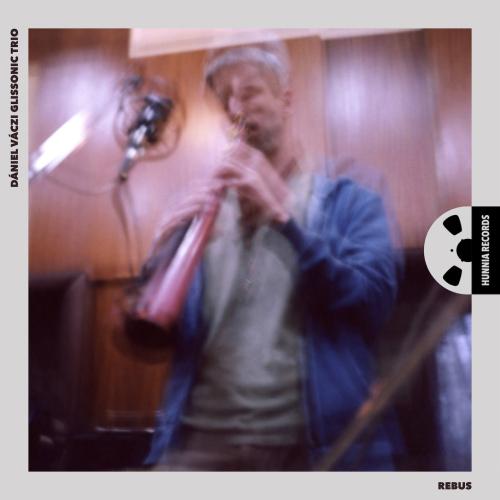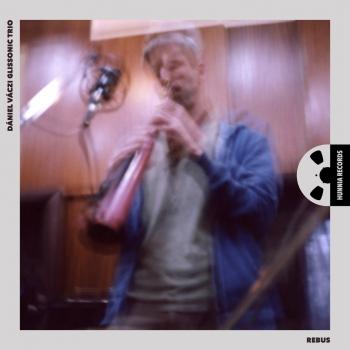
Album info
Album-Release:
2021
HRA-Release:
12.03.2021
Album including Album cover Booklet (PDF)
- 1 Tratimm 06:36
- 2 Rebus 03:24
- 3 Twit - for my nephew Bonifac 04:45
- 4 Imp - for my son Matyko 00:36
- 5 Ness - for Gabor Gado 05:04
- 6 4+4x5 04:30
- 7 eSACHERe 09:19
- 8 Stray - for my son Tobi 04:27
- 9 Urchin - for my daughter Julcsi 02:16
Info for Rebus
In music, a glissando (abbreviated gliss.) is a glide from one pitch to another. Sonic is used to describe things related to sound.
Glissonic is a completely new wind instrument family, invented by Dániel Váczi, developing with Tóbiás Terebessy since 2016. The main novelty is that instead of tone holes it uses a longitudinal gap or slot on the tube of the instrument. The two sides of the slot are covered with magnetic foil which attract a magnetized ribbon on top. The ribbon is fixed on the upper end, stretched and lifted up from the lower end as a string on a violin. You can push down the ribbon anywhere, it will seal up perfectly above it, so you can produce any note in the pitch continuum. It can be played with eight fingers of the two hands or by sliding one finger up and down.
The glissonic system can be used on all kinds of wind instruments: flute, whistle, clarinet, saxophone, oboe etc. The first model is the glissotar, based on the Hungarian tarogato, which is a single-reed instrument with a conical wooden body.
The shape of the pieces is catchy, the melodies are beautiful, the sound is diverse and captivating, the instruments appear in direct sensuality through the old technique - but what’s down there? Raster of walls, with old architectures: mesh made of dodecaphony, inverted and mirrored melodies, repeated simple rhythm formulas, old famous electric instruments. But by showing all of this, are we holding more in our hands than a denture? You have to dig deeper. What could be down there?
"The soggetto cavato, or “buried object,” is a hundreds of years old layer of composing technique. Words, letter and number sequences encoded into sounds sink into the basic layer of music. Under the compositions written in the name of Paul Sacher, the motto of Berg's Chamber Concert emerges, from below the b-a-c-h pieces, under them Hercules Dux Ferrarie, and further down the automatic composition of Guido of Arezzo reversing the principle of solmization. In Leonardo's sketchbooks, wedged between anatomical drawings, a sketch of a slitted musical instrument emerges; and a text encoded with musical notess - or vice versa, soggetto cavato? " (János Bali)
Dániel Váczi Glissonic Trio:
Dániel Váczi, glissotar (glissonic tárogató), sopranino saxophone
Máté Pozsár, Steinway D piano, Rhodes, analogue synthesizer
Zsolt Sárvári Kovács, drums
Daniel Vaczi
is one of the most exciting, multi-talented and versatile musicians of the Hungarian music scene. An inventor of instrument-families (Glissonic) and logic games (Urobo), composer, saxophonist and multi-instrumentalist, he explores and pushes the boundaries of classical, contemporary and jazz. He composes music for different formations, player piano/organ etc... As a musical theorist he invented a new musical system called ‘reticular’, meaning grid-like in which the pitch of the note is connected to its position in time; a kind of spacetime in music. With his musical groups they discover and search for the unity of strict compositions and free improvisations, using the toolkit of contemporary classical music and modern jazz.
Booklet for Rebus










